
Xenoblade Chronicles has always felt like a strange fit in the Nintendo first-party catalogue. It goes against every Nintendo design principle with long cutscenes, unintuitive systems and controls, and adult themes. Despite that, the series has managed to find a sizable audience. And I count myself among its loyal fans.
Even with its hit-or-miss voice acting — or possibly because of it — I fell in love with Shulk and the crew of the original Xenoblade Chronicles. There aren’t many games that I stick with for more than 30 hours, let alone 100, so it says something that I’ve played the entire game twice. When Xenoblade Chronicles 2 launched, it felt like I was hanging out with a friend that I hadn’t seen in years. There was a lot to catch up on, but once we were past the initial awkwardness, it was just like the good ol’ days.
To say that I was excited when Xenoblade Chronicles 3 was announced would be an understatement. The initial trailers showed a game that had a more mature art style, a combat system that borrowed from both its predecessors, and an emotionally charged story. But they didn’t prepare me for the game that I’d play.
Xenoblade Chronicles 3 is the culmination of the Xenoblade trilogy — and it wrecked me.
The darkest Xenoblade game to date
The story of Xenoblade Chronicles 3 takes place in a world at war. Two nations have been locked in the same conflict for a thousand years with no end in sight. People aren’t born to live; they’re born to fight. Soldiers’ lives are tied to a “flame clock,” a device that absorbs the life force from humans upon their death. If their flame clock runs out, they will perish. A soldier’s only purpose is to collect the life force of others.
If that sounds heavy, it’s because it is. Death isn’t just common; it’s essential. Even if they don’t die in battle, people in the world of XC3 only live ten years. It’s something that the characters are constantly aware of. They’re just waiting for their time to run out.
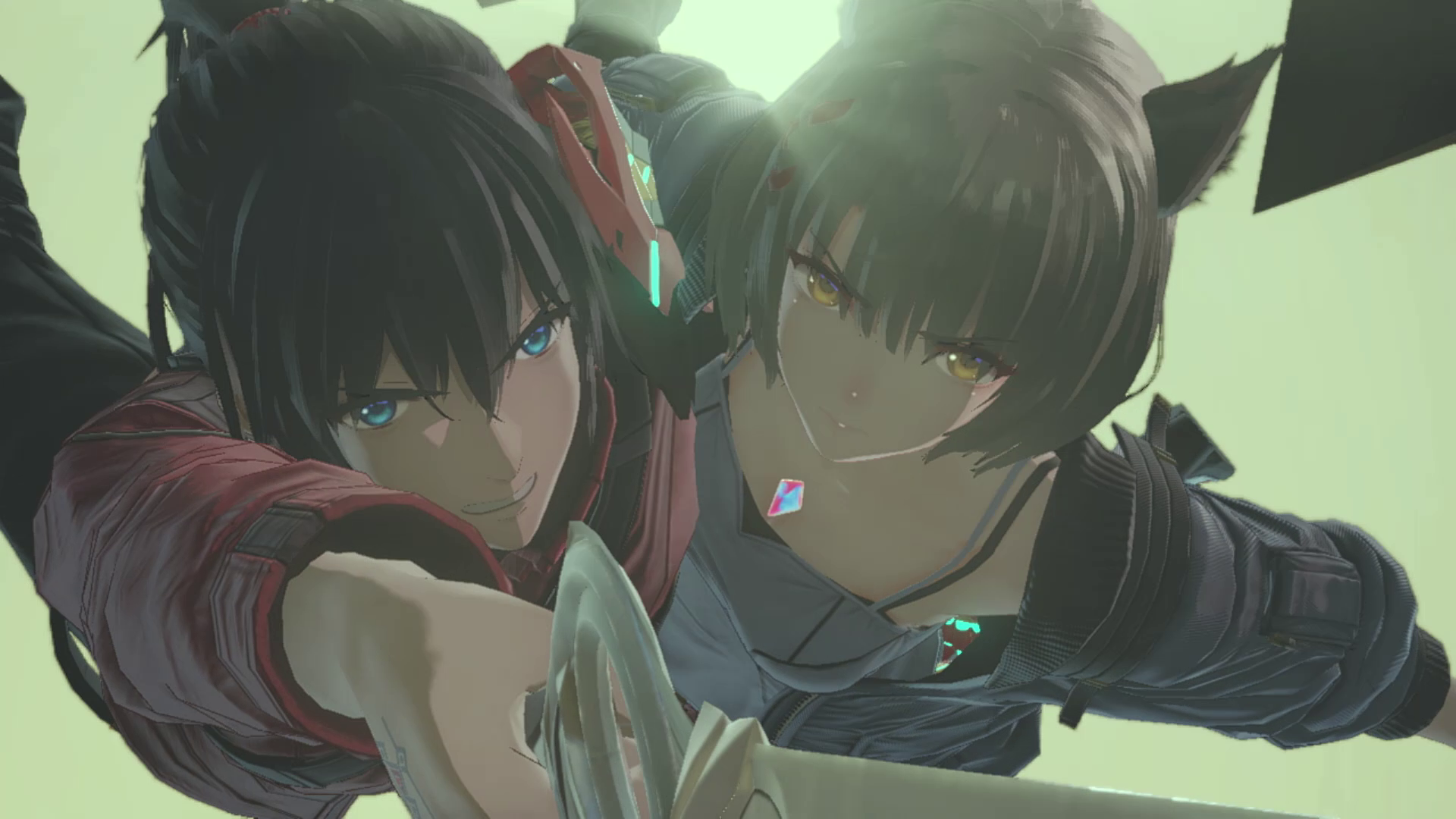
You play as a group of soldiers from opposing sides of the war: three from Keves and three from Agnus. When they’re shown an alternate future where they don’t have to kill to survive, they need to decide whether to trust each other and work together for that future, or accept their current reality. And that’s where our story begins.
The storytelling in the series has always been strong, and XC3 raises that bar even higher. It manages to balance the intimate interpersonal relationships of the main party while telling a story that’s grand in scope and ambition. If you aren’t a fan of JRPG writing — specifically anime tropes and on-the-nose dialogue — it might not be for you. If you can look past a few instances of rough dialogue, though, you’ll experience one of the most epic stories of the past few years.
The characters are endearing and manage to go beyond the two-dimensional caricatures they might initially appear to be. Five hours into the game, I was invested in the individual stories of the characters. At 50 hours, my jaw was on the floor as a series of twists and turns shifted the entire story’s direction. And at hour 100, I was still unlocking new depths to the world and characters.
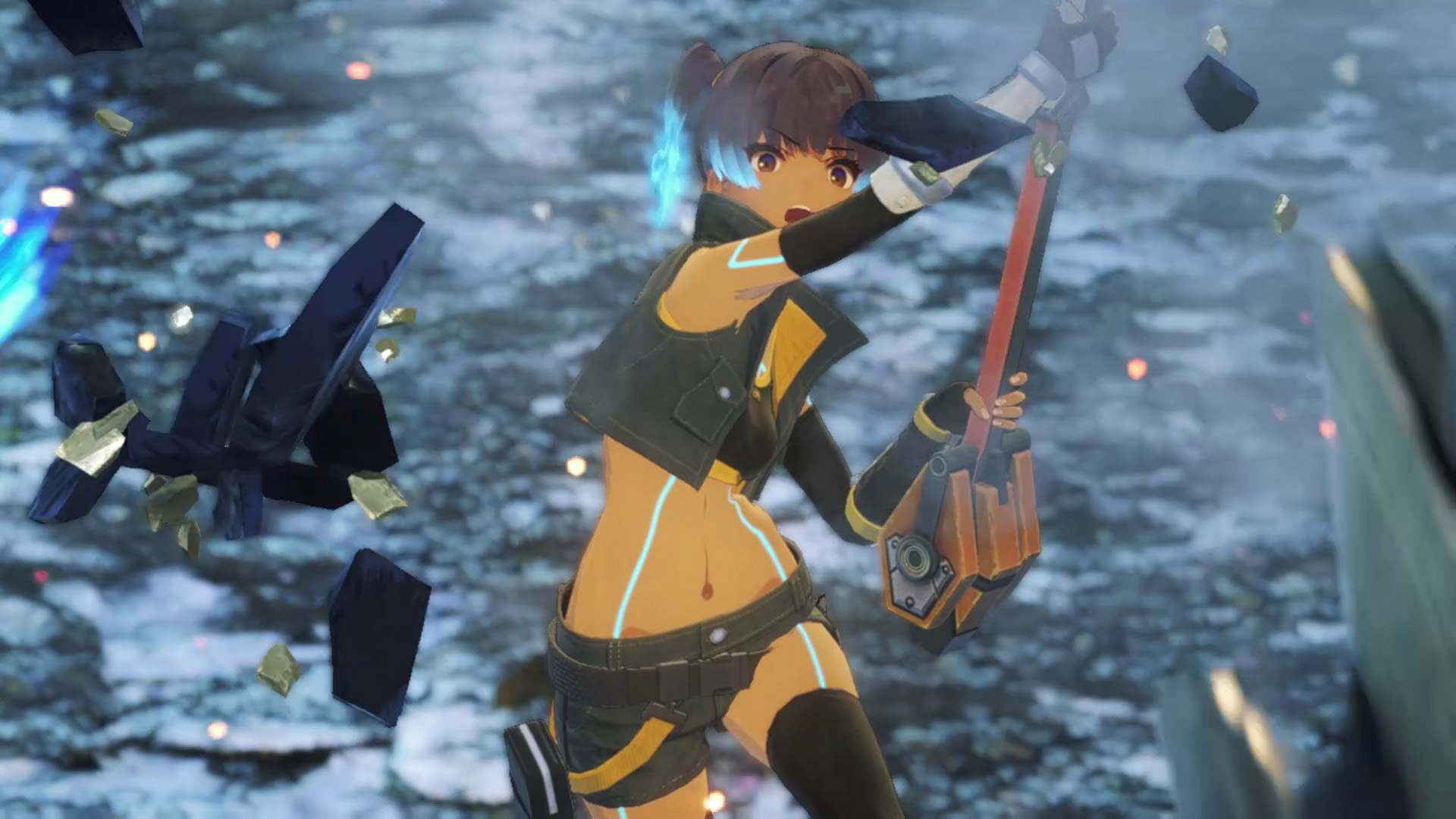
This is largely thanks to great cutscenes and gripping relationships in the main party. There are some scenes that could easily fit into an anime, and a good one at that. There are epic fight scenes, emotionally raw moments, and deception galore. It’s everything I wanted from the story. Past Xenoblade games have had slow beginnings to their stories, but that isn’t the case here. Right out of the gate the game sets up the story with meaningful moments that set the stakes for the characters.
Reviewing a game can often lead to burnout, especially for a game of this length, but Xenoblade Chronicles 3 left me wanting more at the end of every session. There’s always a new revelation just around the corner. Whether it’s a piece of backstory for one of the characters, a new party member, or a big boss battle, Xenoblade strikes the right balance between story, exploration, and mechanics to keep you invested.
The best combat system to date
The combat in XC3 iterates on the timing-based system of its predecessors with a slew of improvements that make it one of my favourite RPG combat systems ever.
Monolith has managed to fix the age-old problem of choosing which party members to include in combat by just including all of them. All six party members join the fray, creating encounters that are equal parts chaotic and strategic. If you’re familiar with XC1 and XC2, you’ll pick the system up quickly because it’s a perfect marriage of the two. Members of Keves have arts (abilities) that recharge over time like the first game, while members of Agnus have arts that recharge by using basic attacks like the second game. But its greatest strength is how deceptively deep it is without the needless complexity of the blade system from XC2.
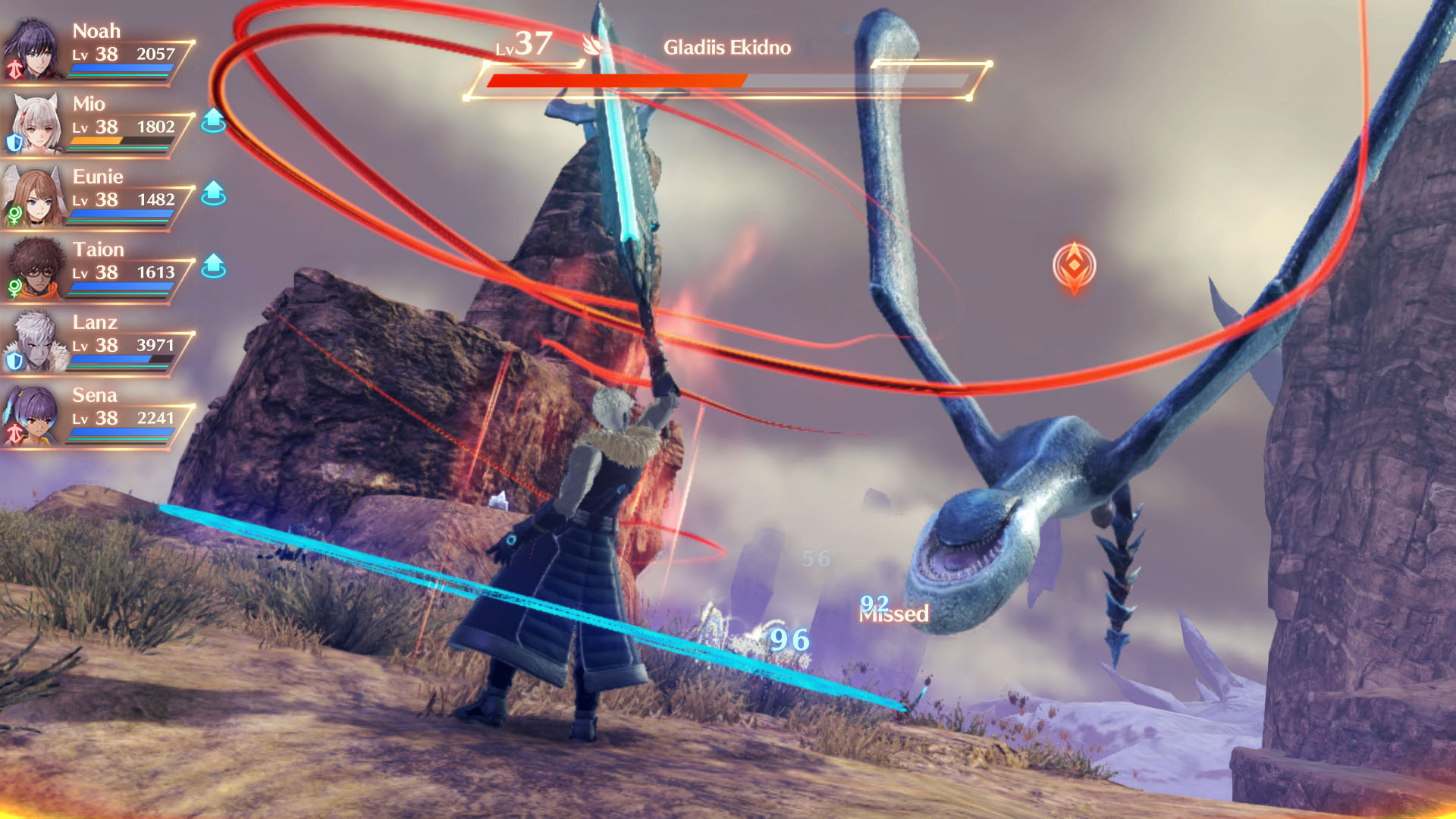
Abilities are tied to the face buttons on the controller, so once the cooldown is over, you just need to press a button to use it. They’ve finally done away with unnecessary menus and other complicated elements to get to the best parts of combat. You start with just four abilities per character, but over the course of the game, you’ll have up to eight abilities equipped at a time. Best of all, characters can learn any class, and there are a ton of classes. Each class has unique abilities, and once they’re learned, characters can use them along with their current class abilities, making customization nearly endless.
And if you were as obsessed with collecting blades in XC2 as I was, you’ll love gathering heroes in XC3. Heroes can be added to your party by completing their loyalty missions. Some are found through the main campaign, while others through exploration. Each hero brings a new class to the mix, and while some are stronger than others in terms of their story, all of them bring abilities to combat that are worth going out of your way to collect.
On top of the real-time combat, XC3 has completely revamped the chain attack system. This card-like system has you assigning characters to build up their attacks to meet certain requirements. It felt overly simple at first, but once I wrapped my head around it, I was chaining together combinations that dealt millions of points of damage.
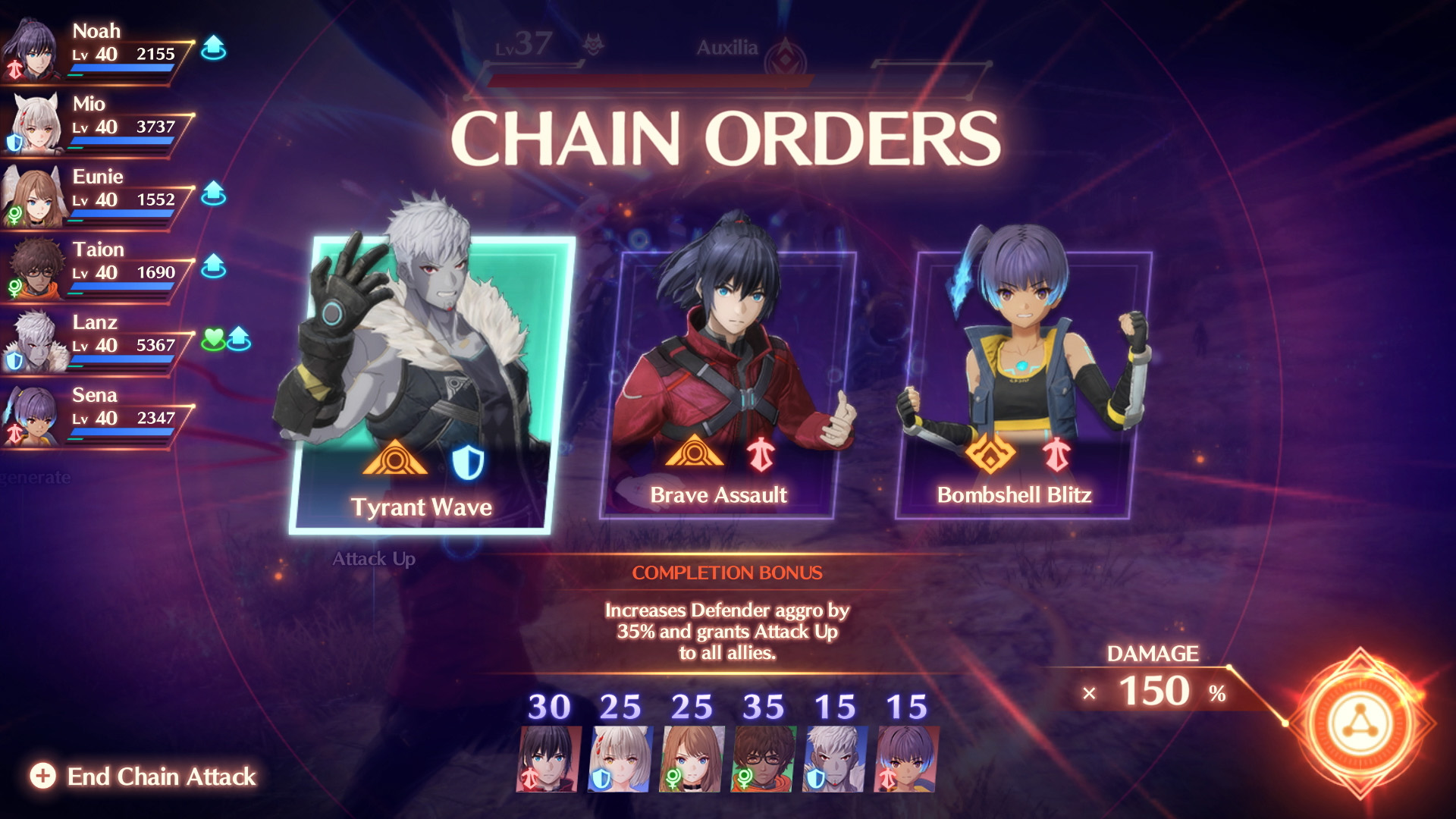
The one area that feels like a missed opportunity is the interlinking system. Characters are able to link together to create a mech known as an Ourobouros. The designs are impressive, and they’re important to the story, but playing as them feels clunky.
It’s also worth noting that if you aren’t into combat with spongy enemies — enemies that can take a lot of damage — you may not enjoy the encounters in XC3. Average encounters take a couple of minutes, and legendary enemies can take upwards of ten minutes depending on your level and damage output. I find it to be a system that rewards careful positioning and timing, but it just won’t be for everyone.
Escaping open world fatigue
Monolith is largely responsible for the open world design of The Legend of Zelda: Breath of the Wild, a game that managed to cleverly circumvent the fatigue that has plagued many open world games in the last decade. I enjoyed my time with Horizon: Forbidden West, but I quickly found myself focusing solely on the main story because I was so intimidated by all of the icons on the world map. Xenoblade Chronicles 3 falls somewhere in the middle of those two.
I loved exploring the open areas in the game. There are more enemies on the fields than ever before, which makes traversing feel more dangerous, and the world more alive. There are plenty of hidden caves and passages to discover, too, but unlike Breath of the Wild, there’s rarely a payoff for your efforts. There’s the occasional hero and legendary enemy, but ninety percent of the time, it was just an equippable item that wasn’t worth it.
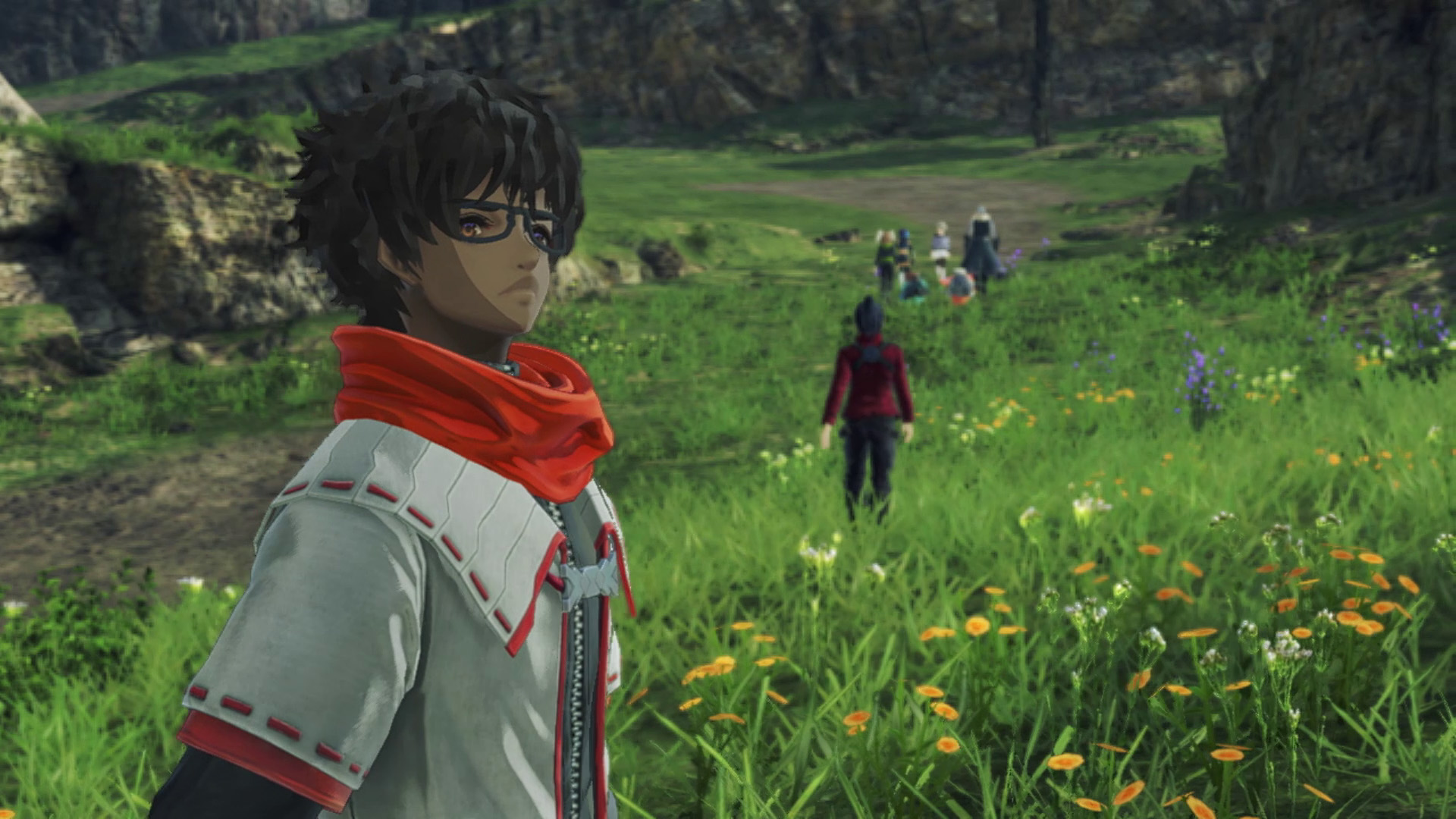
Xenoblade games are infamous for having too many side quests. And to its credit, XC3 avoids falling into the same trap. Instead of hundreds of side quests, there are only a few dozen. It didn’t fully learn its lesson, though. Most of the side content amounts to fetch quests with very little in the way of context or emotional payoff.
While the team has taken the feedback about side quests to heart, they went in the opposite direction with items. There are hundreds of items in the game to keep track of. Sometimes you’ll need to collect five of an item with no indication as to where they’re found. Even equippable items lose their value after a few hours. When you have dozens in your inventory, it’s hard to get excited about a two percent increase to your aggro.
“I don’t need multi-page relationship charts. Just give me meaningful characters.”
And don’t get me started on the economy in XC3. It’s broken.
I was a millionaire by the time I was halfway through the game, mainly because there was nothing to spend my money on. I filled up my ether to the cap when I was just 15 hours into the game. And there are three different currencies in the game for seemingly no reason.
That’s just one example of XC3’s greatest weakness: unnecessarily complicated systems. Even 80 hours into the game, I was still getting new tutorials. I love deep systems as much as the next person, but this is a bit much. I don’t need multi-page relationship charts. Just give me meaningful characters.

To its credit, the game does an excellent job of explaining each system. There are hundreds of gameplay tips in the menu in case you forget how to do something. It’s no wonder some people are intimidated by JRPGs, though. There are just too many.
With all of that said, XC3 is one of the most approachable JRPGs I’ve played. The combat is only as challenging as you make it. If you want to take on a legendary monster that’s five levels above you, you’re likely going to be facing a quick death unless you have a clear strategy, strong party composition, and the correct abilities in place. If you don’t mind grinding, you can consistently stay above the level of the enemies you’ll be facing in the story and breeze through battles.
A beautiful game that’s stuck on the Switch
Xenoblade Chronicles 3 is easily one of the best-looking games on the Nintendo Switch. The character designs are striking, the depth of field effects are cinematic, and the colour palette is gorgeous. Even compared to much higher fidelity games on other systems, the sheer scale of the world impresses.
But there’s a caveat: the game’s performance is inconsistent at best.
While it runs at a noticeably higher resolution than XC2 did, the frame rate has trouble keeping pace at times. On the whole, I was pleasantly surprised by how consistent the frame rate was. When it drops, though, it really drops.

There was a section in the back half of the game where I needed to put the controller down and walk away because the choppiness of the frame rate was giving me motion sickness. It was short-lived, but it’s been a while since I came across an area in a game that was so poorly optimized.
Considering the scale of XC3, both in terms of length and ambition, it’s a remarkable effort. I just long for the day when Monolith can create a game with hardware that can keep up with their vision.
An emotional journey that’s worth taking
Whatever issues I had with it, Xenoblade Chronicles 3 is an achievement. It’s the best game in the series and one that I highly recommend to fans of the genre.
If nothing else, I urge anyone reading check out the soundtrack for the game. This is possibly the best video game soundtrack since Persona 5 Royal. It’s an incredible blend of Xenoblade Chronicles 2: Torna-style jazz, symphonies, and electronic music. Those tracks amplify the already impactful narrative. I’ve always enjoyed the stories in the series, but I’ve really come to love for the characters in XC3.
In a weird way, the story made me face some things that I had mentally locked away. I would dive into the game and completely zone out for hours at a time while I grinded, just enjoying my time playing. When it came time to do story missions, though, I was forced to face the realities of death, and that I didn’t expect.
Xenoblade Chronicles 3 turned out to be more than the game I wanted — it’s the game I needed right now.
You can play Xenoblade Chronicles 3 when it launches on Nintendo Switch on July 29th, 2022.
Image credit: Nintendo
MobileSyrup may earn a commission from purchases made via our links, which helps fund the journalism we provide free on our website. These links do not influence our editorial content. Support us here.


